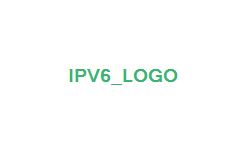In IPv4, multicast support is optional. In IPv6, multicast support is required. This section provides an overview of IPv6 multicast concepts. In addition to unicast and anycast support, IPv6 also provides a mechanism to send and receive IPv6 multicast traffic. IPv6 multicast traffic is sent to a single destination address but is received and processed by multiple IPv6 hosts, regardless of their location on the network. Hosts listen to a specific IPv6 multicast address and receive all packets to that address. Multicast is more efficient than IPv6 unicast for one-to-many delivery of data. Instead of having multiple unicast packets sent, only one packet is sent.
The additional elements of IPv6 multicast include the following:
• The set of hosts listening on a specific IPv6 multicast address is called a multicast group.
• Multicast group membership is dynamic, and hosts can join and leave the group at any time.
• There are no limitations to the size of a multicast group.
• A multicast group can span IPv6 routers across multiple subnets. This configuration requires IPv6 multicast support on IPv6 routers and the ability for hosts to register themselves with the router. Host registration is accomplished by using MLD.
• A host can send traffic to a multicast address without being a member of the group.
In an IPv6 multicast-enabled network, any host can send multicast traffic to any multicast address, and any host can receive multicast traffic from any multicast address regardless of their location. To facilitate this capability, the hosts and routers of the network must support multicast traffic.



No comments:
Post a Comment